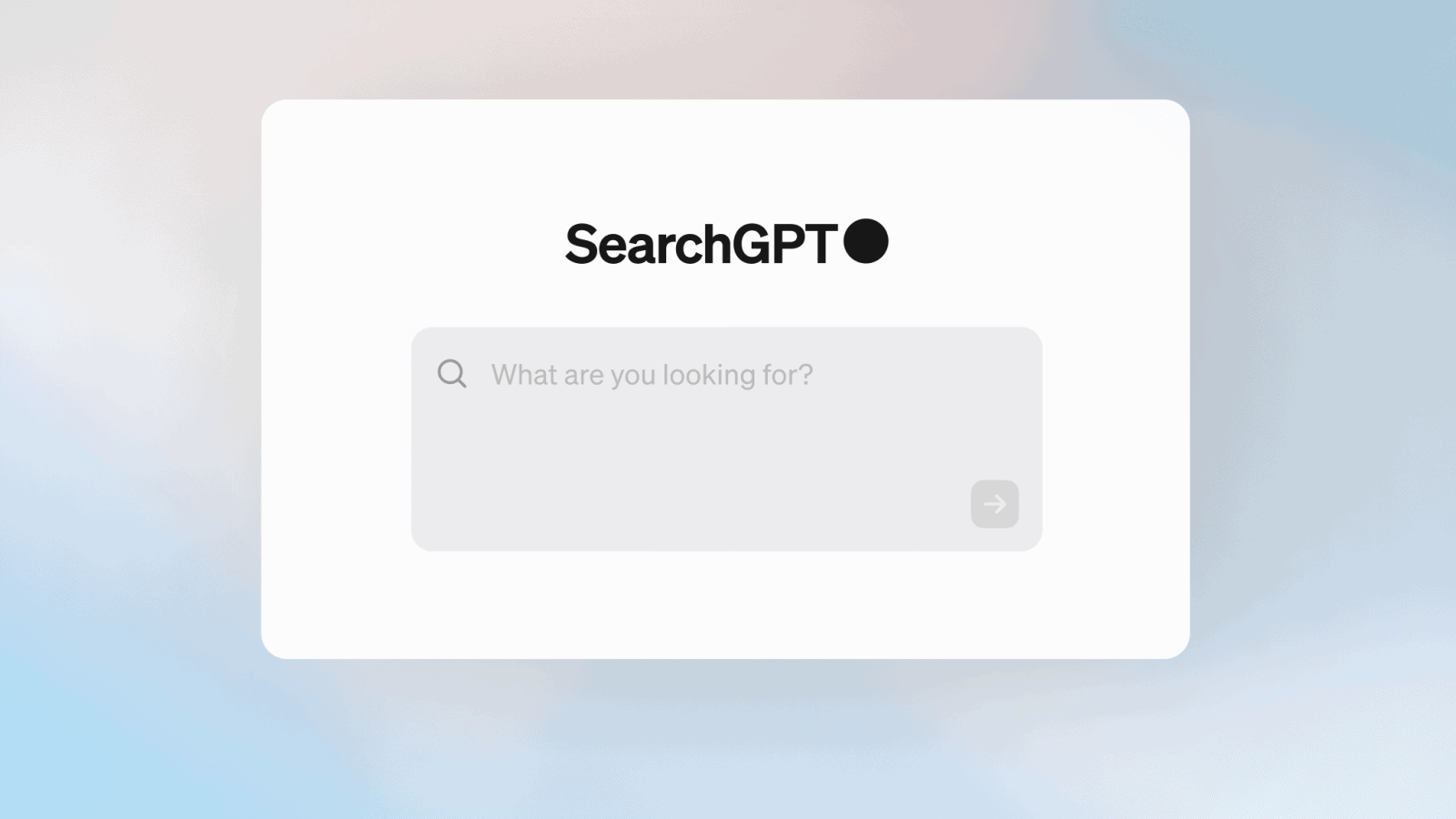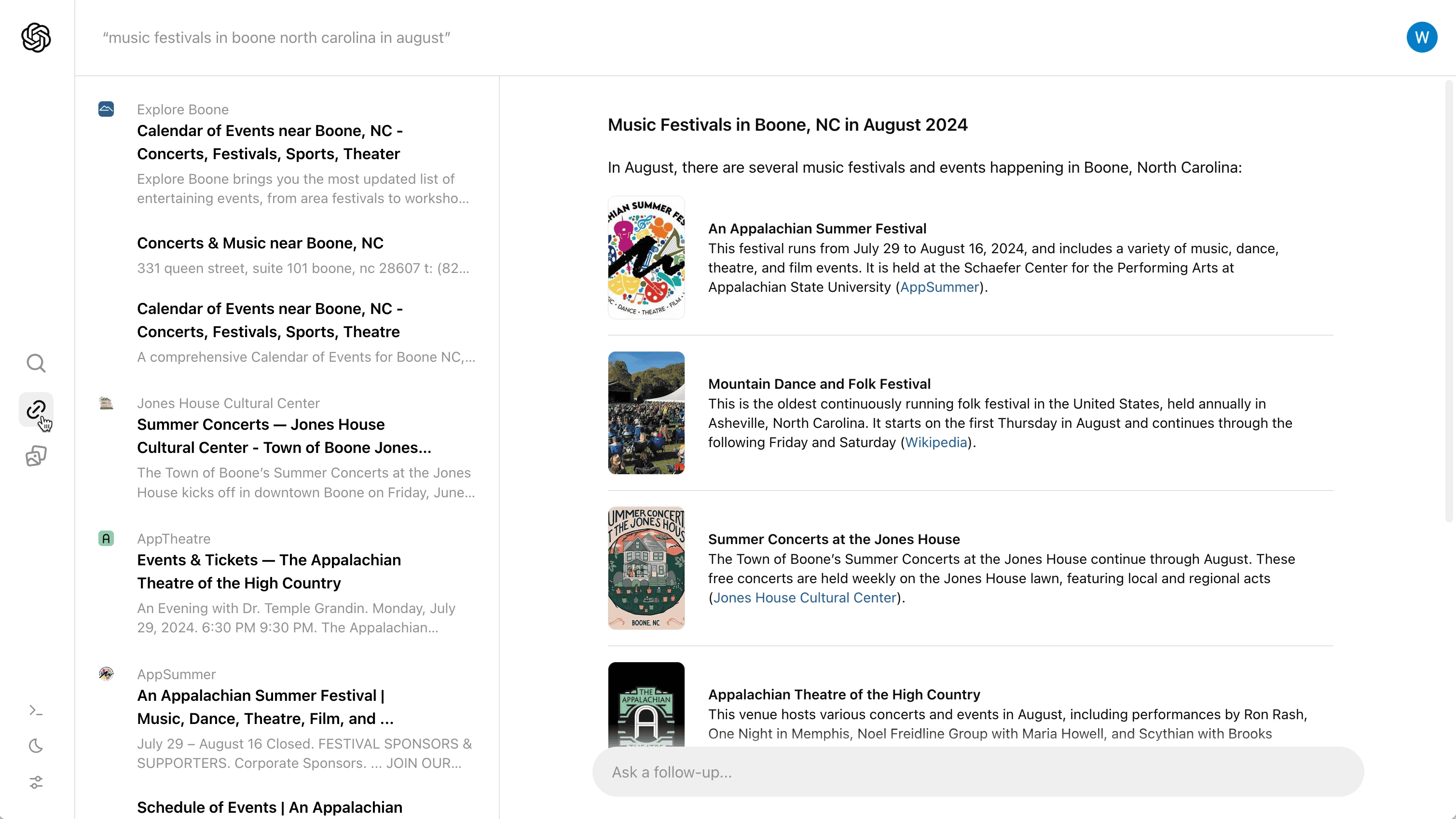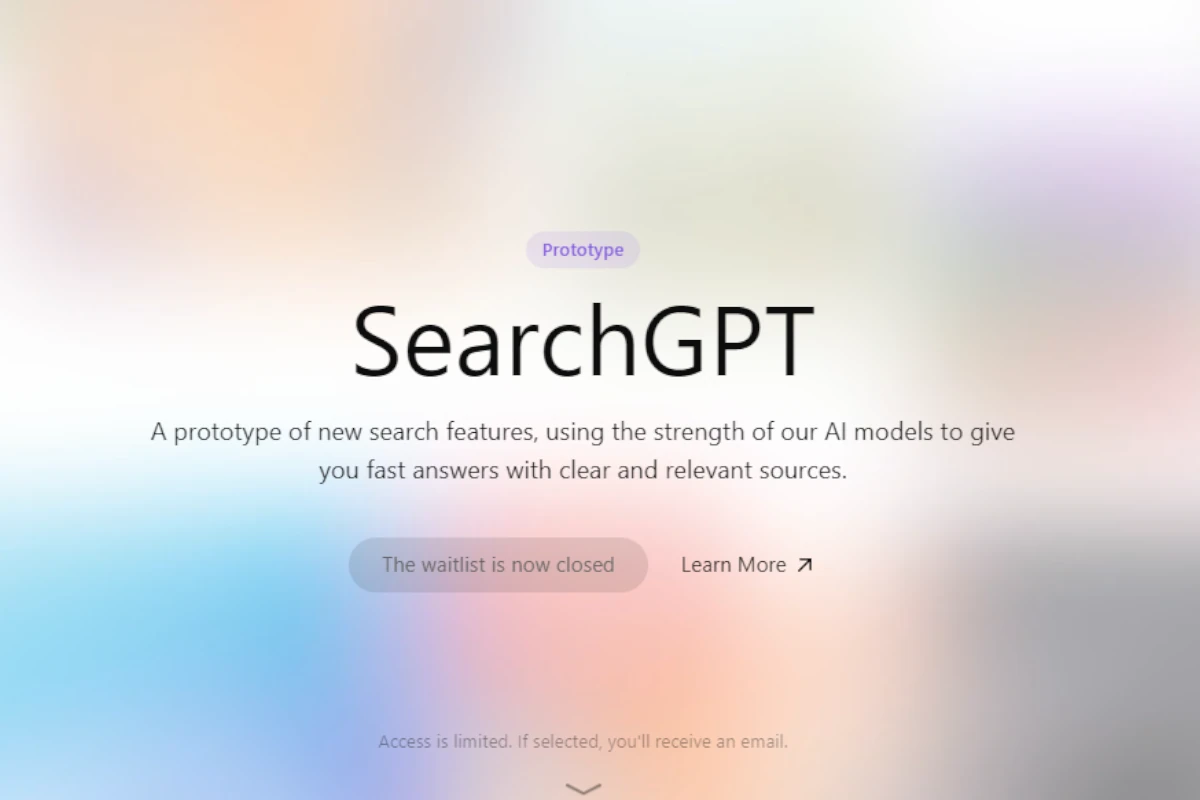OpenAI is testing a new AI-powered search engine called SearchGPT. This tool aims to blend the company’s AI technology with real-time web information. SearchGPT will allow users to search for information in a conversational manner, similar to how they interact with ChatGPT.
The launch of SearchGPT marks OpenAI’s entry into the search market, an area long dominated by Google. This move shows OpenAI’s ambition to expand its AI capabilities beyond chatbots and into more practical applications. SearchGPT is currently available to a small group of users and publishers for feedback.
OpenAI’s approach with SearchGPT includes combining AI models with web information to provide quick, timely answers. The search results will include clear and relevant sources, making it easier for users to verify information. While the current version is a prototype, OpenAI plans to integrate these features into future products.

SearchGPT: A New Era of Search, or Just Hype?
The search landscape is abuzz with the arrival of SearchGPT, an AI-powered search engine from OpenAI. But is it truly a Google-killer, or just another flash in the pan? Let’s dive deep into what SearchGPT offers and how it might reshape our online search experience.
Beyond Blue Links: Conversational Search
SearchGPT aims to revolutionize search by moving beyond the traditional list of blue links. It leverages a large language model to understand your queries in a more nuanced way, allowing for a conversational approach. Ask follow-up questions, refine your search with natural language, and get direct answers summarized from various sources.
Direct Answers and Cited Sources: Trust and Efficiency
Tired of sifting through countless links to find the information you need? SearchGPT aims to solve that. It provides concise answers to your questions, summarizing key points from relevant websites. And to ensure transparency and combat misinformation, it includes in-line citations and a sidebar with links to the original sources.
A New Challenger Approaches: Google vs. SearchGPT
Google has long reigned supreme in the search world. But SearchGPT introduces a new paradigm that could challenge Google’s dominance. By focusing on conversational interaction, direct answers, and source transparency, SearchGPT caters to users seeking a more intuitive and efficient search experience.
Key Differences: SearchGPT vs. Traditional Search Engines
| Feature | SearchGPT | Traditional Search Engines |
|---|---|---|
| Interaction | Conversational, dialogue-like | Keyword-based |
| Results | Direct answers, summarized information | List of links |
| Sources | Clearly cited with in-line citations and sidebar | Often unclear or requires clicking through links |
| Information Accuracy | Potential for inaccuracies due to AI limitations | Relies on website authority and ranking algorithms |

The AI Advantage: Search Reimagined
SearchGPT’s AI capabilities offer several advantages. It can understand complex questions, handle ambiguity, and provide personalized results based on your search history and preferences. It can also adapt and learn over time, improving its accuracy and relevance. However, it’s important to acknowledge that AI models can still have limitations and biases, which could affect the quality of search results.
The Future of Search: What Lies Ahead
SearchGPT is still in its early stages, but it offers a glimpse into the future of search. As AI technology advances, we can expect even more sophisticated and personalized search experiences. Whether SearchGPT will ultimately dethrone Google remains to be seen. But one thing is certain: the competition is heating up, and users stand to benefit from the innovation and advancements that will inevitably follow.
Key Takeaways
- SearchGPT combines AI with real-time web data for conversational search
- OpenAI is testing SearchGPT with a small group of users and publishers
- The tool aims to provide fast answers with clear sources
Overview of SearchGPT
SearchGPT is OpenAI’s new AI-powered search engine. It aims to change how people find information online by giving direct answers instead of just links.
The Collaboration with Bing and Microsoft
OpenAI teamed up with Microsoft and Bing for SearchGPT. This partnership brings together OpenAI’s AI tech and Bing’s search data. Microsoft’s backing gives SearchGPT a strong start in the search market.
The team-up lets SearchGPT use up-to-date web info. It also taps into Bing’s vast index of websites. This helps SearchGPT give accurate and current answers to user questions.
Redefining Search with Conversational Capabilities
SearchGPT changes search by talking with users. It doesn’t just show a list of links. Instead, it gives direct answers to questions.
Users can ask follow-up questions, just like in a real chat. This makes searching more natural and user-friendly. SearchGPT can understand context and give more helpful answers over time.
The AI can explain complex topics in simple terms. It can also break down info into easy-to-read chunks.
Impact on Search Engine Market
SearchGPT shakes up the search world. It’s a big challenge to Google, which has led the market for years.
Google still holds most of the search market share. But SearchGPT could change that. Its AI-powered answers might draw users away from traditional search engines.
Other companies are also joining the AI search race. This includes firms like Perplexity and AI Overviews. The competition could lead to better search tools for everyone.
Content Ecosystem and Publisher Relations
SearchGPT‘s rollout impacts publishers and content creators. The new search tool changes how users find and interact with online information.
Licensing Agreements and Content Partnerships
SearchGPT works with publishers to access their content. OpenAI signs deals with media companies to use their articles and data. These agreements let SearchGPT show snippets from trusted sources.
Publishers get paid when their content appears in search results. This helps news sites and blogs make money from their work. The deals also set rules for how SearchGPT can use the information.
Some big names have joined forces with OpenAI. The Associated Press and News Corp are part of this group. These partnerships give SearchGPT a wide range of quality content to pull from.
Involvement of Major Publishers
Many top publishers are taking part in SearchGPT’s launch. Forbes, Wired, and Axel Springer have signed on. This gives users access to respected journalism through the new search tool.
Not all publishers are on board yet. Some worry about how AI search might affect their business. A few have even threatened legal action against AI companies using their content without permission.
OpenAI is working to address these concerns. They’re talking with more publishers to grow their network. The goal is to create a fair system that benefits both AI search and content creators.
AI-Powered Summaries and Journalism
SearchGPT uses AI to make quick summaries of news stories. This helps users get the main points fast. The tool pulls info from many sources to answer questions.
Publishers are watching closely to see how this affects their work. Some worry AI summaries might replace full articles. Others see it as a way to reach more readers.
The system tries to give credit to original sources. It shows where information comes from and links to full articles. This helps maintain the value of journalism in the AI age.
Technical and Ethical Considerations
SearchGPT brings new capabilities to AI-powered search, raising important technical and ethical questions. This section explores key aspects of its functionality and potential impacts.
Perplexity and Contextual Responses
SearchGPT uses advanced AI to grasp complex queries. It aims to give answers that fit the user’s context. This helps people find what they need faster.
The system pulls data from many sources. It then creates a clear, focused response. This is different from traditional search engines that show lists of links.
SearchGPT can handle follow-up questions. It remembers past queries to give more helpful answers over time. This feature makes searches feel more like real conversations.
Content Engagement Model and AI Overviews
SearchGPT changes how people interact with online information. Instead of clicking through multiple websites, users get summarized results directly.
The AI creates overviews of topics by combining facts from various sources. This saves time but raises concerns about accuracy and source credibility.
Content creators may need to adapt their strategies. With fewer clicks to individual pages, the way online content is valued could shift. This might affect how websites earn money from ads.
Generative AI Models and Search Relevance
SearchGPT uses large language models like GPT-4 to generate responses. These models can create human-like text based on vast amounts of training data.
The AI aims to give relevant answers quickly. It tries to understand the meaning behind searches, not just match keywords. This can lead to more helpful results for complex questions.
There are challenges in keeping information up-to-date. The AI needs constant updates to provide current facts. Balancing speed, accuracy, and freshness of information is a key focus for the SearchGPT team.







